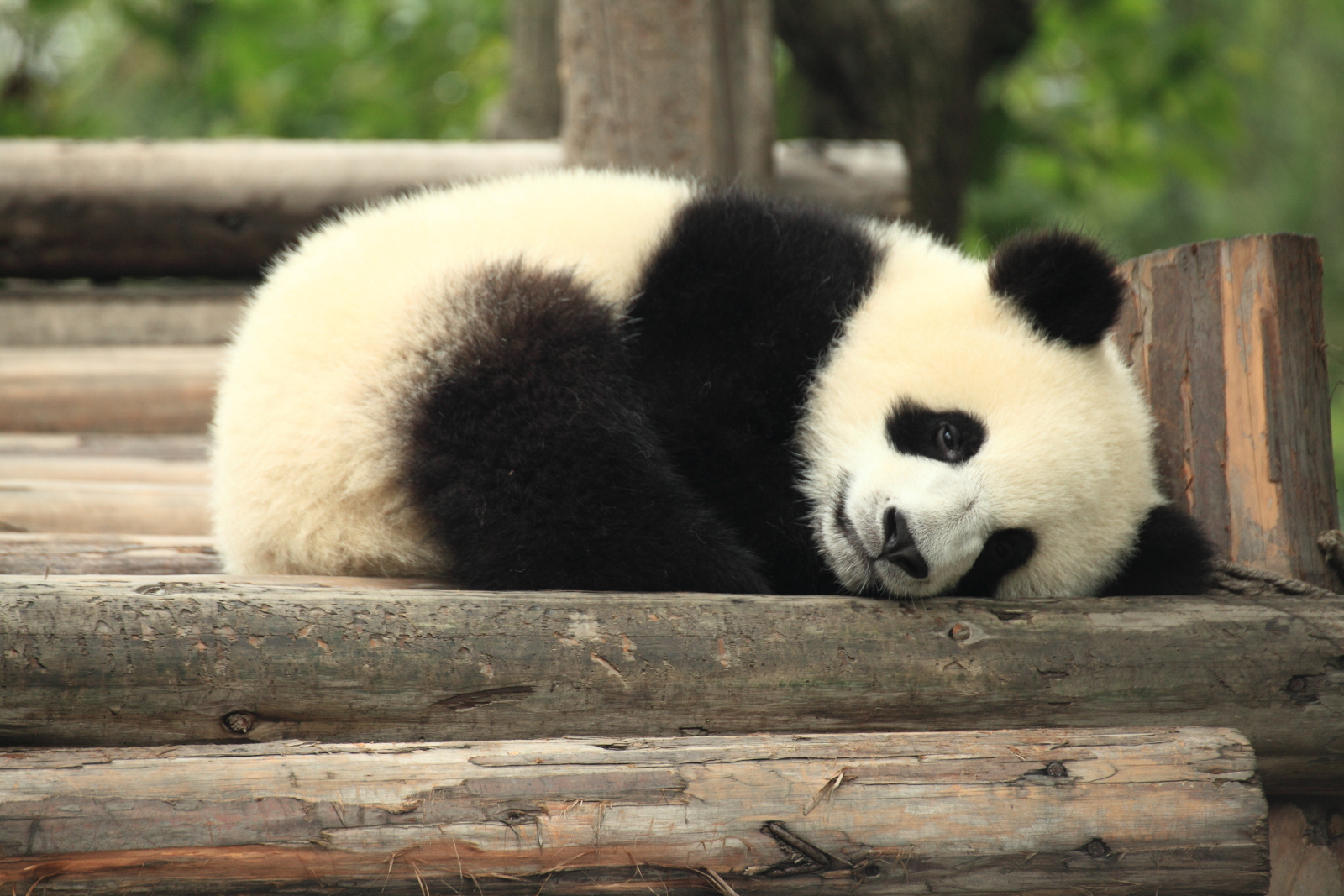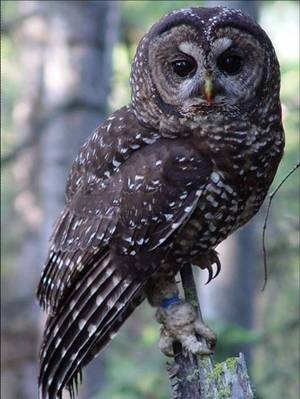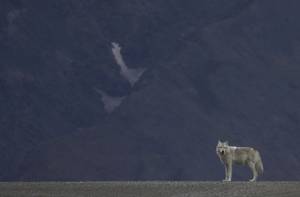The planet we live on has an astonishing diversity of life. Approximately 1.5 million species have been catalogued by scientists so far, and estimates suggest around 8.7 million species may grace the surface of the Earth. Yet just one of these species, Homo sapiens, has come to dominate the Earth, leading many to dub our time the "Anthropocene". The dominance of human beings has had, and continues to have, serious consequences for the other organisms which call this planet home. Seven billion people to clothe, feed, educate, house and ultimately satisfy, mixed with a lack of understanding, and at times a lack of care, mean that great swathes of natural habitats have been destroyed and organisms hunted unsustainably. The result of human action is a current extinction rate which is estimated to be between 1,000 and 10,000 times higher than the natural extinction rate. In other words, mankind appears to be causing the sixth mass extinction, and the first on our planet since the dinosaurs died out.
Faced with thousands of endangered species and a pitifully low worldwide budget, an increasing number of conservationists have begun to call for a controversial form of prioritising. They claim that tough decisions must now be made about which species to prioritise and which to abandon. However, a rigorous set of criteria for making such decisions is yet to be made and much debated. Four categories have, however, often been mentioned as alternatives for funding: flagship species, umbrella species, indicator species and keystone species.
1. Flagship species
If asked to name an endangered species most people would immediately come to the same answers - the black rhino, the mountain gorilla, or the giant panda, for example. These are so-called "flagship species" and are the species which front advertisement campaigns, make major news stories and attract thousands of tourists annually to zoos and reserves around the world. They also happen to be the species that currently gain the most conservation time, money and effort. The argument for prioritising flagship species for conservation is the funds they raise as well as the interest and hope they promote within the public. For example, the Florida panther is the state animal of Florida and has been the subject of a long-term conservation project to bring its numbers from just 20 in the 1970s to over 150 today. Many in Florida love the animal so much they pay 25$ annually to have a license plate with its picture, the proceeds of which go to its conservation.
However, some question whether funds spent on such charismatic large  vertebrates as the Florida panther could be better spent elsewhere. For example, The Economist reports that in 2010, the cost of managing tiger reserves alone ran at $82 million. Housing giant pandas, meanwhile, costs each zoo over $2.5 million per year. Compare this to the proposed UN "reducing emissions from deforestation and degradation" (REDD+) schemes, which protect hectares of tropical rainforest for just a few dollars per year, and such "flagship species" seem comparatively poor value. Furthermore, what happens if the flagship sinks? Public hope and support for conservation could turn to distrust. Finally, many of the threatened flagship species are top carnivores and, unless their actions control a prey species which would otherwise run riot, they could disappear from an ecosystem without a detectable change in the processes and functions of their environment.
vertebrates as the Florida panther could be better spent elsewhere. For example, The Economist reports that in 2010, the cost of managing tiger reserves alone ran at $82 million. Housing giant pandas, meanwhile, costs each zoo over $2.5 million per year. Compare this to the proposed UN "reducing emissions from deforestation and degradation" (REDD+) schemes, which protect hectares of tropical rainforest for just a few dollars per year, and such "flagship species" seem comparatively poor value. Furthermore, what happens if the flagship sinks? Public hope and support for conservation could turn to distrust. Finally, many of the threatened flagship species are top carnivores and, unless their actions control a prey species which would otherwise run riot, they could disappear from an ecosystem without a detectable change in the processes and functions of their environment.
2. Indicator species
An indicator species is an organism whose abundance and fluctuation are thought to reflect the chemical and physical health of the environment, as well as the abundance of other species in the community. These sentinel organisms are sensitive to environmental change and so can provide early warning to conservationists, as well as guiding decisions over necessary action. Mussels are a famous example of such an organism and many projects around the world monitor marine and freshwater quality using mussel populations. The US forest service, meanwhile, uses the northern spotted owl as an indicator species in the old-growth forest of the Pacific Northwest. The rationale is that by protecting species such as the threatened northern spotted owl, areas of old growth forest will also be saved, therefore having beneficial effects on all species which rely on that habitat type. Therefore, the owl acts not only as an indicator species, but also an umbrella species (see below).
growth forest will also be saved, therefore having beneficial effects on all species which rely on that habitat type. Therefore, the owl acts not only as an indicator species, but also an umbrella species (see below).
However, there are problems with targeting indicator species for conservation priority. Firstly, by helping the status of the indicator species alone, the indicator ceases to indicate the health of all other species in its environment. For example, the logging industry in America frequently suggests procedures targeted at owls such as artificially enhancing their prey density or adding shelter. Such measures are obviously of no use to other inhabiting species. Furthermore, the knowledge and understanding of which species are the best indicators, as well as what exactly they should indicate (what exactly is a healthy ecosystem?) is currently lacking.
3. Umbrella species
The concept of an umbrella species is an extremely simple one. These are species whose range-size is so large that by protecting that particular species (and its habitat) many other species benefit. A pair of northern spotted owls require 800ha range size and reserves set aside for the owl are known to protect molluscs, salamanders and many other species within their habitat.
4. Keystone species
As George Orwell famously wrote in the book animal farm, "All animals are equal, but some animals are more equal than others". This can be said to be true in the natural world too, as some species have impacts on their environment far beyond what would be expected from their abundance or biomass. These species are referred to by scientists as "keystone species" and some scientists believe single species management should shift its focus from the "cute and cuddly" to the practical.
For example, without the actions of sea otter populations, sea urchin numbers would soar and decimate underwater kelp forests. These forests are a major source of food for many species of snails, crabs and geese, as well as a source of shelter for numerous species of fish. The humble earthworm, meanwhile, may be considered a keystone species due to the way in which it engineers its environment. Finally, the gray wolf was once abundant throughout North America and, when the famous Yellowstone area of the United States was declared a national park in 1872, over 300 wolves roamed that region alone. However, fearing the effects of wolves upon elk and bison herds, as well as local livestock, bounty programmes offering as much as 50$ per wolf were set up in order to eradicate the species from Yellowstone. As a result elk populations exploded, grazing increased, and many plant species declined  precipitously in number. This had knock on effects for populations of songbirds, as well as for those of the iconic beaver. Furthermore, a loss of trees meant nutrient cycling, water regulation and stream bank stability were all affected. However, in the 1970s Yellowstone changed their policy on wolves and, thanks to concerted effort and reintroduction attempts, today the gray wolf numbers almost 100 within the park. Their reintroduction has coincided with a rebound in songbird populations and a ten-fold increase in beaver numbers. This small case study of just a region of the world provides a potent lesson as to the significant importance of certain species to the day to day functions of our planet. It is these keystone species that many claim should be our priority. In other words focus on the earthworm and leave the panda alone.
precipitously in number. This had knock on effects for populations of songbirds, as well as for those of the iconic beaver. Furthermore, a loss of trees meant nutrient cycling, water regulation and stream bank stability were all affected. However, in the 1970s Yellowstone changed their policy on wolves and, thanks to concerted effort and reintroduction attempts, today the gray wolf numbers almost 100 within the park. Their reintroduction has coincided with a rebound in songbird populations and a ten-fold increase in beaver numbers. This small case study of just a region of the world provides a potent lesson as to the significant importance of certain species to the day to day functions of our planet. It is these keystone species that many claim should be our priority. In other words focus on the earthworm and leave the panda alone.
Alternative single-species management approaches?
These approaches are, of course, not the only options of single-species management. Other new approaches have been suggested. The most exciting of these include the evolutionarily distinct and globally endangered (EDGE) campaign which highlights and conserves species with few close living relatives (evolutionarily speaking) and those which are unique in the way they look and behave. The organisms targeted by the programme are those which receive very little media attention yet many appear almost mythical or that of science fiction. Species focused on include the Chinese giant salamander which can reach lengths of 1.8m and the toothed-billed pigeon which has the dubious title of being one of the closest living relatives to the dodo. This ranking of organisms by how genetically distinct they are allows us to maintain the greatest genetic diversity and so, at least in theory, maintain nature's evolutionary capacity at a time when it is most needed.
One final alternative is a model which has been termed "Project Prioritization Protocol" (PPP). This model being developed by scientists at the University of Queensland in Australia takes account of the costs, benefits and the probability of success of conservation measures for different threatened species. This mathematical approach has been taken up in New Zealand whose Department of Conservation use PPP to decide on the best strategy to halt the decline of more than 700 native species. The result has been a considerable increase in the number of species managed with no increase in spending.
A change in mindset?
It is worth noting briefly that some scientists have suggested single species management is not the best approach. Its main competition comes in the form of ecosystem management - a strategy that can be said to be gaining increasing popularity as our understanding of the complex interactions within the natural world improves. Ecosystem management can be seen as a more holistic approach to conservation, aiming to conserve the major ecological processes which are vital to mankind (and all other species), but are being perturbed by human actions. Examples of such processes include water regulation, nutrient cycling, pollination and soil formation, and the total value of such services has been estimated at $33 trillion annually. By conserving an area of rainforest, for example, soil erosion is greatly reduced as the trees roots bind the soil together. This prevents damaging effects on local freshwater supplies and reduces the prevalence of illnesses such as diarrhoea. Furthermore, the rainforest continues to act as a carbon sink, provide potential medicinal drugs and, most importantly with regards to this article, save the species that rely so heavily upon it. As such, ecosystem management can be considered a possible alternative to our obsession with targeting actions at individual species. However, its main focus is not on saving species, but rather on what nature provides for mankind - an anthropocentric approach. This is a worry in the long term as if such ecosystem services could ever be replaced there would be no need for the swathes of protected habitat and many of the species indirectly saved may well be abandoned.
The bottom line...
Ultimately, the most important change in mind-set is not a question of different approaches but one of a worldwide attitude. Yes, there are seven billion people to clothe, feed, educate, and house, but that also means there are seven billion people to educate and seven billion people who can each make a difference. Recent studies have shown that British children can name more Pokémon than natural species, this must change. Furthermore, conservation must be brought to the forefront of public attention, and, ultimately, to politicians minds. Between 2001 and 2008, the total annual expenditure on global biodiversity was $21.5 billion. Compare this to the annual defence budget of the United Kingdom alone (at $34 billion), and this seems pitiful. Whilst conservation faces such budget constraints tough decisions must be made and conservationists must be realistic. But, with more funding and public support, one hopes we can build a bigger ark and save the thousands of species that are dying before mankind even discovers them.
approaches but one of a worldwide attitude. Yes, there are seven billion people to clothe, feed, educate, and house, but that also means there are seven billion people to educate and seven billion people who can each make a difference. Recent studies have shown that British children can name more Pokémon than natural species, this must change. Furthermore, conservation must be brought to the forefront of public attention, and, ultimately, to politicians minds. Between 2001 and 2008, the total annual expenditure on global biodiversity was $21.5 billion. Compare this to the annual defence budget of the United Kingdom alone (at $34 billion), and this seems pitiful. Whilst conservation faces such budget constraints tough decisions must be made and conservationists must be realistic. But, with more funding and public support, one hopes we can build a bigger ark and save the thousands of species that are dying before mankind even discovers them.
References
- Previous Why we ignored Ebola...
- Next Catalysing change









Comments
Add a comment